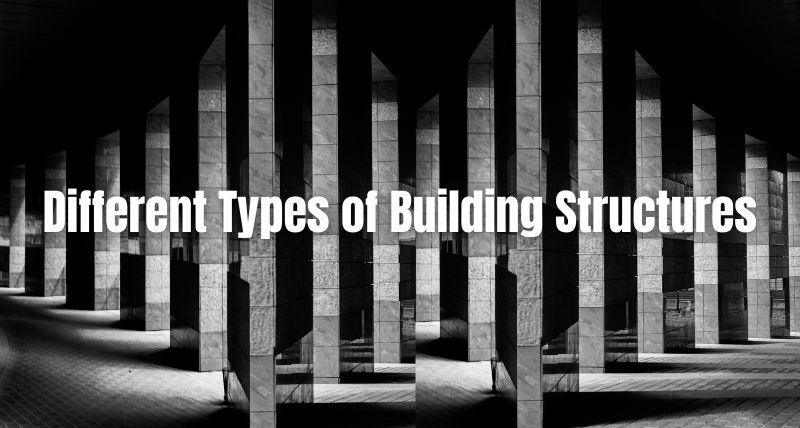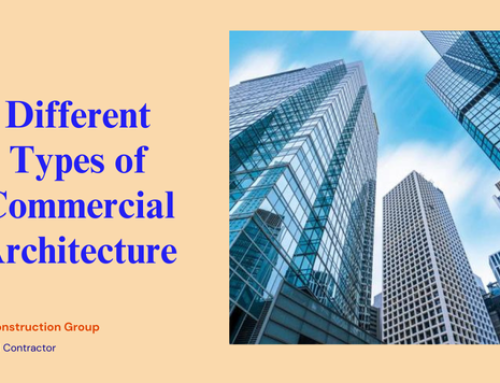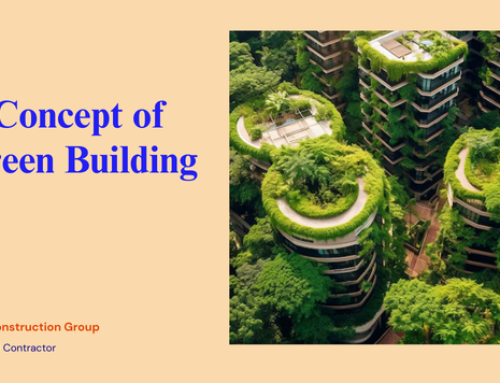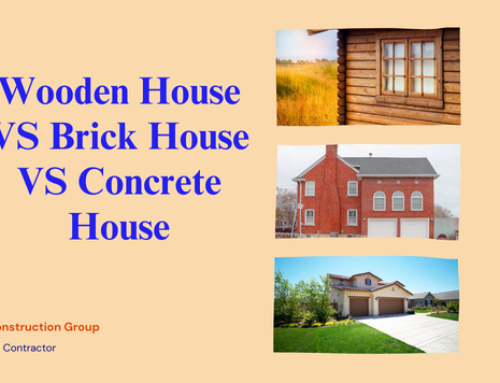Have you ever wondered what types of building structures exist in the world? Or maybe you wanted to know what kind of structure was the world’s most common type of structure. Well, now you are going to find out. This article goes through all the different types of building structures and their characteristics.
Contents
Different Types of Building Structures
There are various types of building structures, each with its own unique set of characteristics and features. These include structural systems such as framed structures, shell structures, and cable structures, as well as materials such as wood, steel, concrete, and masonry. In this section, we will explore the different types of building structures, their characteristics, and the materials used in their construction.
Let’s take a look at the followings:
-
Load-Bearing Structures
These structures are designed to support weight or load. They are an important aspect of building design and construction, as they are responsible for transferring the loads from the roof, floors, and walls to the foundation of the building.
Load-bearing structures can be made from a variety of materials, including concrete, steel, and wood, and can take a variety of forms, such as beams, columns, and walls. The type of load-bearing structure used in a building is typically determined by the size, shape, and purpose of the building, as well as the type of soil and other local conditions at the site.
-
Wood Frame
Wooden frame buildings are a type of structure that has been around for a long time and is widely used throughout the world. These buildings are made entirely of wood that is cut and assembled on site, with workers constructing the various components such as studs, plates, joists, and rafters as needed before installing other materials like drywall and paneling.
Wooden frame buildings have several advantages, including low cost, renewability of materials, and the ability to be constructed quickly using basic construction tools. However, they also have some disadvantages, such as being prone to fire, deterioration due to the elements, and being vulnerable to the strong winds of hurricanes and tornadoes.
-
Frame Structures
These structures are a type of load-bearing structure that consists of a series of interconnected structural elements, such as beams, columns, and girders, that work together to transfer loads from the roof, floors, and walls to the foundation of the building. Frame structures can be made from a variety of materials, including steel, concrete, and wood, and can take a variety of forms, such as steel frames, concrete frames, and timber frames.
Frame structures are a common type of construction used in many buildings, including residential buildings, commercial buildings, and industrial buildings. They are known for their strength, durability, and versatility, and are often used in buildings with large open spaces or spans. Frame structures are also relatively easy to design and construct, making them a popular choice for many types of buildings.
-
Shell Structures
These structures are designed to transfer loads evenly around their exterior surfaces. They are typically thin, curved structures that are made from concrete, steel, or other materials, and are known for their ability to span large distances with minimal material. Some common examples of shell structures include domes, arches, and vaults.
Shell structures are used in a variety of applications, including buildings, bridges, and stadiums. They are known for their aesthetic appeal and their ability to create large, open interior spaces without the need for supporting columns or other interior structural elements. Shell structures are also relatively lightweight and can be constructed quickly, making them a popular choice for many types of construction projects.
-
Membrane Structures
These structures are supported by a network of cables or rods and covered with a flexible membrane material, such as PVC, Teflon, or other synthetic fabrics. They are typically used as roofs or shelters and are known for their ability to span large distances with minimal material. Membrane structures can be found in a variety of settings, including sports stadiums, exhibition centers, and transportation terminals.
There are several types of membrane structures, including tensegrity structures, cable-net structures, and membrane-covered cable structures. Membrane structures are known for their versatility, flexibility, and ability to create unique, aesthetically pleasing structures. They are also relatively easy to install and dismantle, making them a popular choice for temporary or movable structures.
-
Space Frame Structures
Space frame structures are three-dimensional structures that are made up of interconnected elements that form a rigid, three-dimensional network. They are typically composed of lightweight, slender members that are connected using nodes or joints, and are used to span large distances with minimal material. Space frame structures can be made from a variety of materials, including steel, aluminum, and wood, and are often used as roofs, canopies, or other types of overhead structures.
Space frame structures are known for their strength, flexibility, and ability to span large distances without the need for intermediate supports. They are also relatively easy to design and construct and can be quickly assembled and disassembled, making them a popular choice for temporary or movable structures. Some common examples of space frame structures include sports stadiums, exhibition centers, and transportation terminals.
-
Steel Frame
These buildings are a type of structure that is used for larger buildings and is made from steel columns and trusses, which are able to support heavy roofs and floors. These buildings are commonly seen in high-rise buildings, as it is easy to lift and weld the materials into place with a crane. The advantages of steel frame buildings include strength, flexibility in assembly, ease of welding for faster construction, and the availability of components.
Steel frame buildings are also suitable for areas prone to hurricanes and tornadoes, and the materials can be recycled for reuse in the future. However, steel frame buildings can be prone to corrosion in humid environments and may lose strength at temperatures above 500 degrees.
-
Cable-Stayed Structures
Cable-stayed structures are a type of load-bearing structure that consists of a central pillar or tower and a series of cables that are attached to the tower and extend outward to support a deck or platform. The cables are typically arranged in a radiating pattern, with one end anchored to the top of the tower and the other end anchored to the deck or platform. Cable-stayed structures are often used as bridges or other types of overhead structures and are known for their ability to span large distances with minimal material.
There are several types of cable-stayed structures, including harp, fan, and semi-fan configurations. Cable-stayed structures are known for their aesthetically pleasing appearance and their ability to create long, slender structures with minimal material. They are also relatively easy to design and construct and can be quickly assembled and disassembled, making them a popular choice for temporary or movable structures.
-
Grid Shell Structures
Grid shell structures are three-dimensional structures that are made up of a series of interconnected beams or ribs that form a grid-like pattern. They are typically made from lightweight materials, such as steel or aluminum, and are used as roofs or other overhead structures. Grid shell structures are known for their ability to span large distances with minimal material, and for their ability to create complex, curved shapes.
There are several types of grid shell structures, including single-layer and double-layer grid shells. Grid shell structures are often used in the construction of buildings, such as sports stadiums, exhibition centers, and transportation terminals. They are known for their aesthetic appeal and their ability to create unique, visually striking structures. They are also relatively easy to design and construct and can be quickly assembled and disassembled, making them a popular choice for temporary or movable structures.
-
Concrete Frame
High-rise buildings and parking garages are often built using a concrete frame due to their strength. This type of construction involves the use of reinforced concrete columns, slabs, and beams to create the support structure of the building. While reinforced concrete is readily available, it can be time-consuming to cast on-site, which is often necessary for building structures.
The advantages of a concrete frame building include the ability to use recycled steel for reinforcement and the ability to shape concrete into almost any form. However, casting concrete on site can be a slow process, and the concrete may need to be specially engineered for buildings in earthquake-prone areas.
LUX Construction Group – Take Professionals’ Help!
LUX Construction Group is a professional construction company that is capable of helping with the construction of a variety of different structures.
A general contractor, interior designer, and architect of our team has the skills and expertise needed to handle a wide range of construction projects and can work with clients to design and build structures that meet their specific needs and requirements. If you have a construction project in mind, it is worth considering working with LUX Construction Group to bring your vision to life.






